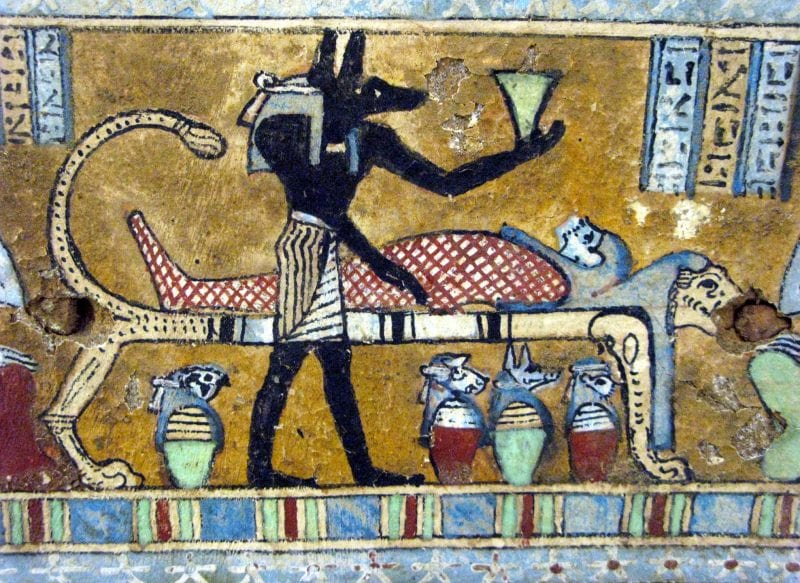Embalming is a physically invasive procedure that holds back the decomposition of the human body. It can be performed for reasons like delayed funeral services or medical reasons. The process involves the injecting of embalming fluids into the body of the deceased which helps to slow down the process of decomposition after death. The procedure involves two steps. The first step is surgical in nature and the second step is cosmetic in nature.
What Is Embalming And Why Is It Done?
The process of preserving the body post death has been prevalent since the times of Ancient Egypt in 6000 B.C. The process of embalming involves disinfecting the body with the insertion of a preservative solution. Preponderantly, formaldehyde solution was used for the process but lately alternative solutions are used too.
We can take the services of the embalmer for many reasons. Leaving the deceased body at room temperature for long periods of time is unsanitary. The process also leads to the enhancement of the appearance of the deceased. If the funeral services of the deceased body is to take time for any reason, the body should be embalmed.
How Extensive Is Embalming?
Embalming procedure is relatively common in the United States of America. For many families, it has become an indispensable part of the funeral arrangements. More importantly, public viewing of a deceased body is not permitted without body embling procedure by the funeral houses.
Types Of Embalming
There are various types of embalming depending on methods of injecting the embalming fluids These are mentioned below:
1. Arterial Embalming
Injecting the embalming fluid into the carotid artery is described as arterial embalming. The process is conducted using a centrifugal pump wherein the blood is displaced and drained out via the right jugular vein. The embalmer makes sure that the embalming fluid is evenly distributed. Routinely, a body takes up to two liters of embalming fluid. A hypodermic needle is used to inject the fluid where the centrifugal pump cannot reach.
2. Cavity Embalming
In this type of embalming procedure, an incision is made above the navel in the abdomen. The organs are scalped out. Then the embalming fluid is added to the peritoneal cavity. The opened up portion is then sutured up.
3. Surface Embalming
In surface embalming, the skin of the body is applied with embalming fluid. This option is chosen when the deceased body has been damaged during autopsy or by certain diseases like cancer.
What Happens When A Body Is Embalmed?
When the body is embalmed, the following happens
- Friends and relatives can view the body for a longer time period without the body been decomposed
- The appearance of the deceased body is not unpleasant to look at.
How Long Does The Process Of Embalming Take?
The body embalming process takes forty-five minutes to upto two hours. It includes washing and drying of the hair and body of the deceased.
How Long Does An Embalmed Human Body Last?
Contrary to popular belief embalming does not completely stop the decay of the body. It just postpones it. Preferably, a deceased body can be embalmed for upto two weeks.
Are Your Organs Removed When You're Embalmed?
If an autopsy has been performed on the deceased body, it is a practice to remove the vital organs during the procedure and place it in embalming fluid. When the autopsy is completed, those organs are placed back into the body. In other cases, the fluids of the body cavity are aspirated using a small incision above the navel.
Is The Brain Removed During Embalming?
The brain is not removed during embalming.
Does Embalming Provide Public Health Benefits?
According to the data provided by the US Centre for Disease Control, embalming does not provide any public health benefits. The state of Hawaii does not allow embalming of a deceased body even if the person has died due to any contagious disease. Since the embalming fluids are highly toxic in nature, embalmers are required to wear full body coveralls and a respirator during the embalming procedure.
Is Embalming Required Before Burial?
No, embalming is not required before a burial. The family of the deceased can opt for an eco-friendly burial if they opt to bury the body within 48 hours of the death. This is called an immediate burial.
What is Embalming Fluid?
Embalming fluids are fluids used to embalm the deceased bodyThey consist of various preservatives and disinfecting agents. These are chemical in nature. Few commonly used chemicals in embalming fluids are formaldehyde and methanol. The fluid hardens the tissue inside the body. It acts as a preservative not allowing the body to become a host for bacteria.
Modern Embalming Process
Professionals have taken up the modern embalming scenario. They are well-trained in the fields of chemistry, pathology, anatomy and microbiology along with cosmetology and restorative art. Embalmers in the US need to complete specific courses. In most of the starters, embalmers have to pass licensing tests before they start their career in this field.
So what does a modern embalming process involve? First and foremost, the embalming house gets the permission of the family of the deceased to embalm the body. When the deceased body needs to travel states, embalming becomes essential by law. For example, crossing of state lines from Alaska, Alabama and New Jersey, state laws require the procedure of embalming.
It should be noted that each case of embalming of a deceased body is different from another. They are unique in that the needs will be different. Proper care and attention needs to be given in each case.
The steps involved in the modern embalming process includes the following steps:
- The body is firstly placed on an embalming table. It is then bathed and cleaned. The head is kept held up with the help of a head block.
- The face is set up with the embalmers with a photo provided by the family. Using an eye-cap, the eyes are kept in place. The mouth is closed with the setting of the lower jaw. The lips are sutured too.
- Embalming fluid is then passed into the body via the arteries.
- The amount of embalming fluid depends on body to body. Statistics state that around 1 gallon of embalming fluid is required for every 50 pounds of body weight.
- The blood is removed from the veins and the vessels are tied off
- Sutures are placed at the incisions.
- The body is washed and then dressed
- To restore the appearance, moisturizing cream and cosmetics are applied to the face, hands and neck. The hair is styled. Powder is applied to the body to reduce the odors.
- The prepared body is finally casketed and placed for public viewing.
Pros And Cons Of Modern Embalming
The three main reasons for embalming a body are – disinfection, preservation and restoration. This statement was made by an embalming instructor at Gupton-Jones College of Funeral Service, Jeff Seiple.
A major benefit of embalming the body is that it disinfects the body and reduces the risk of growth of bacteria, especially if the person had died of a contagious disease. Restoration is achieved in embalming if the death has been caused by an accident. This is also soothing to the family members of the deceased. It brings about a positive experience in the grieving process.
What Are The Alternatives To Embalming?
Embalming is a tried and tested method for those who want to preserve the body of the deceased for a specific amount of time. There are alternatives to achieve the same. They include storing the body in a freezer or use of dry ice. These are more eco-friendly methods of preventing the body from decomposing fast. An immediate burial will be most suited if you want to cut costs and be eco-friendly.
Conclusion
Families should know their options for what will work best for the deceased. It helps them in their grieving process and gives a proper send off. Preparing a list of things required post one’s death will be helpful to your family members on how to execute the necessary things.




